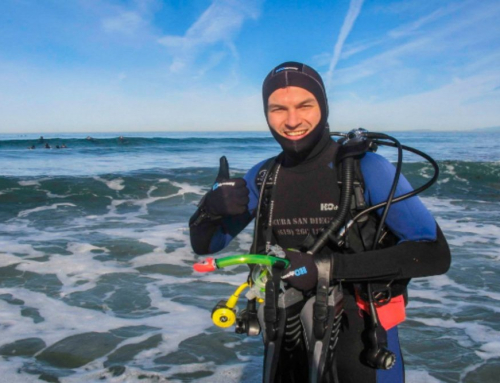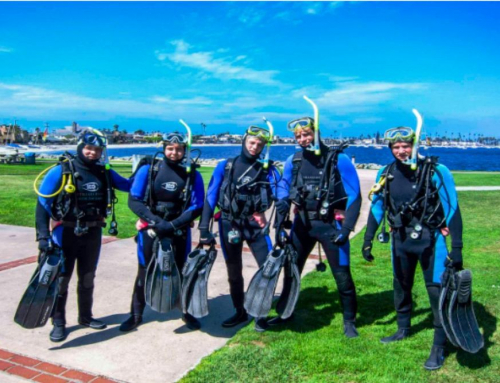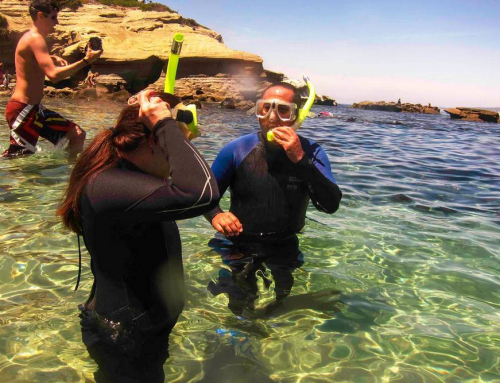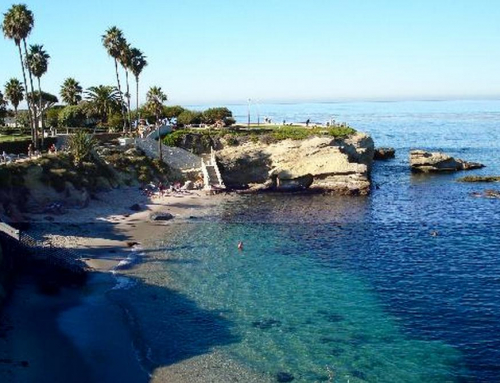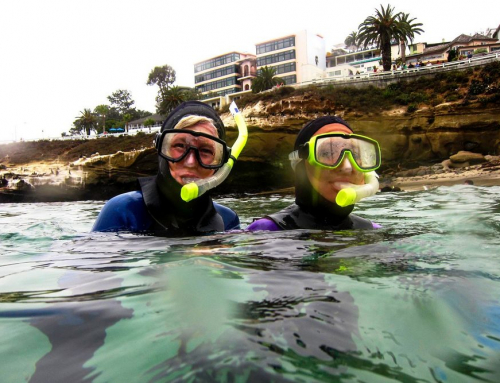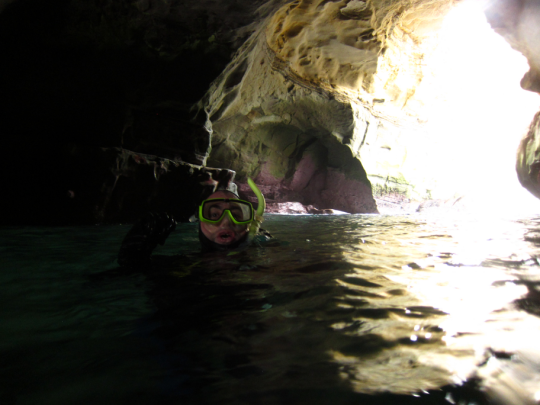
Of course knowing how to swim is an absolute requirement for anyone swimming in the ocean and San Diego’s La Jolla Cove Ecological reserve is no exception. But, I am a weak swimmer, can I use a life vest or other swim aide? No! San Diego City Lifeguards prohibit the use of any life vests or other floatation devices while swimming or snorkeling in the La Jolla Cove Ecological Reserve.
Some prospective guests call and ask Scuba San Diego Inc if swimming is required. The answer is always yes. But, we have learned over more than 5 decades of running Snorkeling tours that “swimming ability” means different things to different people. Many times of a half century of snorkeling we have had to return poor swimmers to shore immediately upon their entering the water. So what is a good gauge of a person’s swimming ability relative to open ocean swimming?
A good question to ask oneself is, “Can I swim non-stop 220 yards (201.1 meters) ” in a swimming pool without stopping at the coping at each end of the pool or standing on the bottom of the swimming pool at any time during the swim?” If a person can do this then a 1.2 mile round trip Snorkel Adventure to the La Jolla Sea Caves should be no problem.
If you can’t do this you can train yourself at home or in a swimming pool you have access to by watching this video of Michael Phelps freestyle swimming technique: https://www.youtube.com/watch?v=G72NZOrAx5k
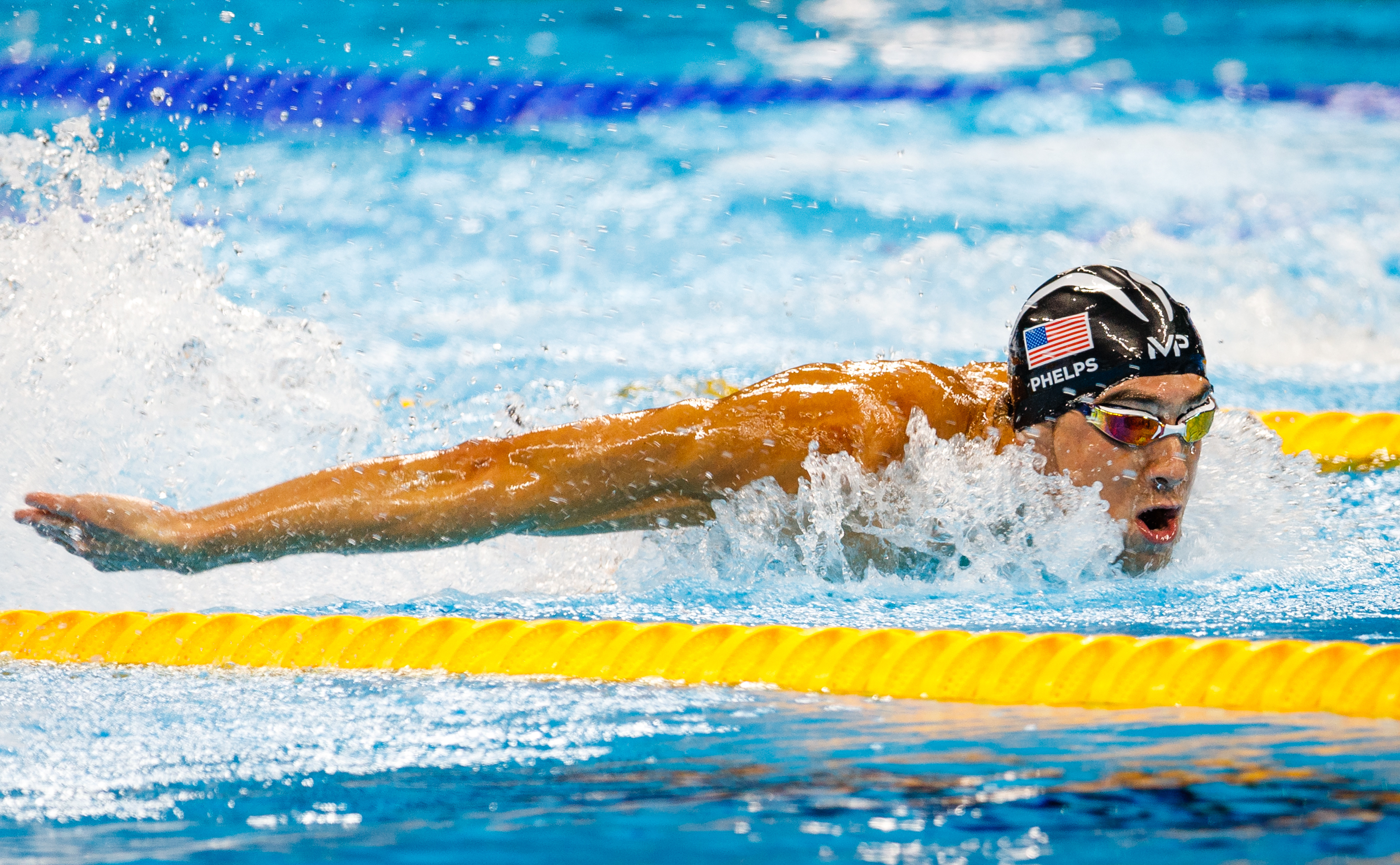
As you watch this video:
- Watch how he catches the water with his hand and pulls it back in a elongated “S” curve and pushes it back off below his hip maximizing the amount of water pulled on the catch and the release push below the hip as he pulls out for the next stoke cycle to begin.
- Note how the finger tips of his hand are gliding only a couple of inches from the pull out to the reach for the next catch, right at the water’s surface He does not lift his hand and arm (or head) up high out of the water but glides fingertips forward for the next catch only inches above the water. Why? If he were to lift his hand and arm high out of the water returning to the next catch that lift of the weight of the arm would drive him down creating drag on his body and thereby slowing his forward momentum.
- Watch his head. He does not lift it up to breath between stoke cycles. He keeps his head in direct line with his body and straight ahead and rotates it 25 degrees while down in the water to breathe. Then how is he breathing in? He is breathing in the bow wave created in front of his shoulder created by his forward momentum. Efficient swimmers never lift their heads out of the water to breath during the freestyle craw. If form is correct there will always be a bow wave to breath in front of your shoulder.
- Look at his legs. He is not bicycling (knee bending like being on a bicycle) but kicking from his hips as if his legs were whips. The knee is part of the hip and should not be locked in a bicycle position.
- Look at his feet. Toes point straight back feet turned slightly inward enough so the top of the foot acts like a flipper and the entire hip, leg, foot assembly is a flexible whip squeezing water (action reaction) to the rear.
It is as if he was on a invisible medieval rack pulling his entire body and stretching arms, head, spinal column, hips, legs, feet into a straight line to achieve maximum hydrodynamic efficiency in the fluid. On his catch his hands are tied into the rack to enter right hand touching the line on right side of his spine touching it and one on the left side of the line drawn from the spine touching it.
As you watch the Michael Phelps video recommended in this Blog please place yourself mentally inside Michael Phelps’ body. Imagine yourself swimming as he does. Put yourself mentally in his presence as he swims. As a person desiring to improve the swimming ability enough to be reasonably safe it the water it is important to practice these techniques in a pool before entering the water and time yourself to get to the 220 yard swim in under 12 minutes.



